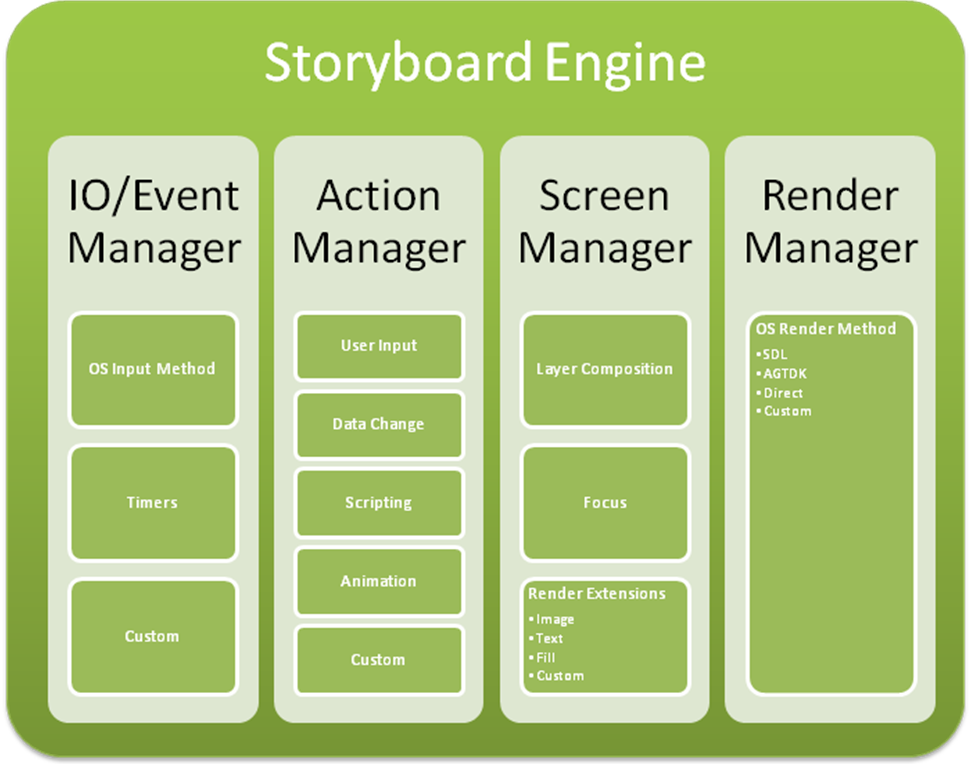Table of Contents
- Introduction
- Storyboard Engine Environment
- Storyboard Engine
- Plugins
- Target Configuration
The Storyboard Embedded Engine (Engine) is a runtime framework that allows a description of a graphical application to be interpreted and executed. The graphical application description, known as a deployment bundle, contains all of the instructions required to render screens to a display and to process events that would cause state transitions to occur in the application, potentially leading to additional screens being displayed.
The separation of the visual display logic from the system behavior is achieved through the use of events. Events are asynchronous notifications containing a data payload that can be delivered to the Engine from multiple sources to trigger changes.
 |